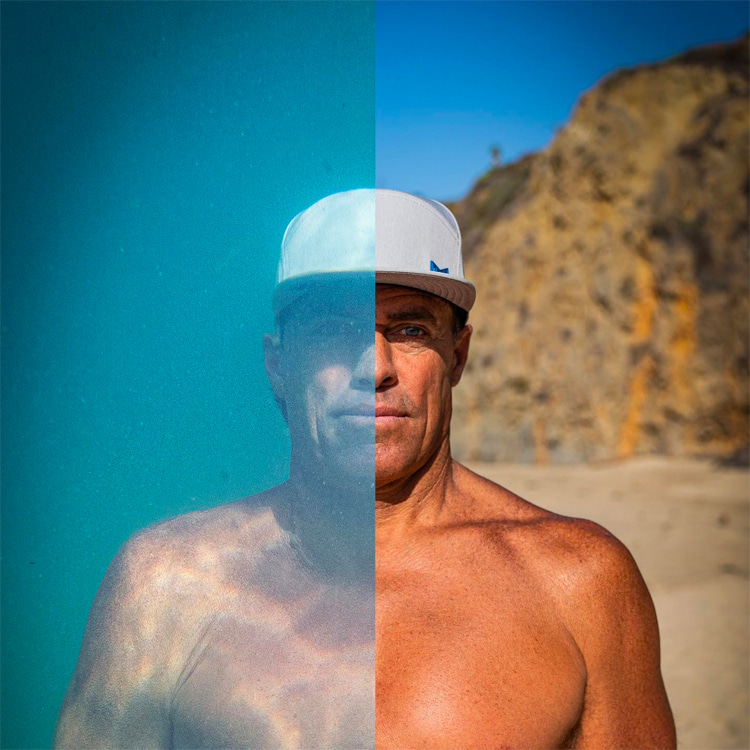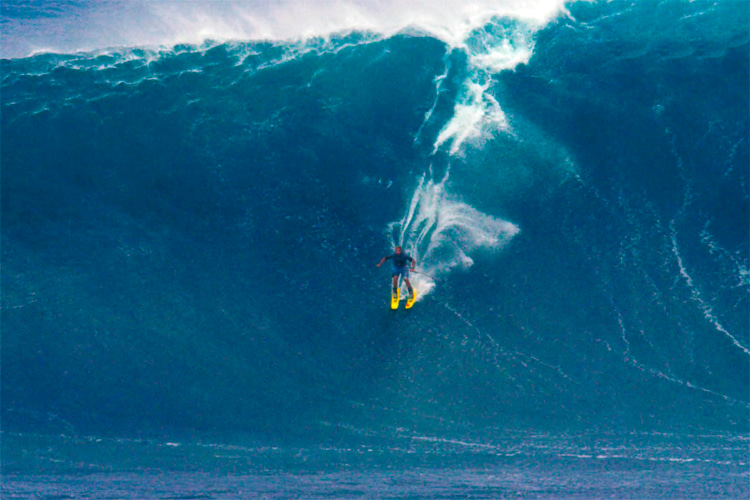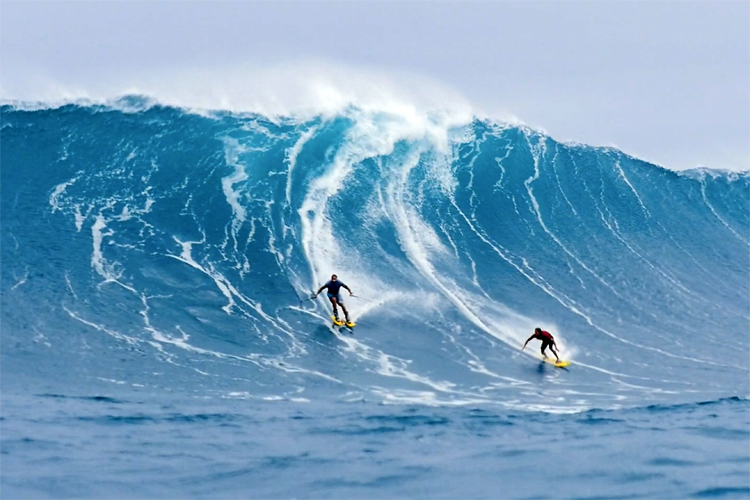He calls himself a multi-sport athlete, and you can barely describe him better. Meet Chuck Patterson, the world's greatest wave skier.
Only a few humans can dream of riding humongous moving mountains of water at Jaws, Mavericks, and Nazaré on a surfboard.
Professional big-wave surfers are highly trained individuals who put their lives at risk every time they paddle or get towed into these massive and heavy giants.
Most of these athletes rely on guns, long and narrow surfboards with quick wave entry and average maneuverability characteristics, or short and heavy boards equipped with foot straps to tame the XXL swells.
These are the weapons of choice for breaking Guinness World Records, winning contests, and free-chasing storms.
However, there's always someone ready to try something new in high waters.
In the past, we've seen windsurfers, kiteboarders, and even skimboarders adventuring themselves in some of the world's most extreme wave-riding arenas.
Recently, foilboards entered the ocean gladiators' stadium, too, and gave flying above water a new meaning.

The Art of Wave Skiing
However, there's always room for new, creative forms of challenging the planet's largest water mountains.
Chuck Patterson is alone with everybody.
The Californian waterman developed a unique way of taking on waves of consequence like Peahi and Mavericks.
One day, he tweaked a pair of snow/water skis and asked, "Why not?"
Suddenly, Patterson found himself at the doors of wave-riding history, becoming one of the first, if not the first, person to ride massive waves using custom waterskis.
Sooner than later, the multi-sports athlete was developing his unique technique, making turns on open faces and using poles for control, unlike traditional water skiing.
After all, aren't waves mountains? And isn't water melted snow?
In big wave environments, the daring adrenaline-seeker uses equipment similar to one used in powdery white slopes - boots and poles.
But how did it all start?
Chuck Patterson and Shane McConkey were good friends.
Following McConkey's infamous line on waterskis in Alaska, conversations began about surfing waves with skis.
McConkey believed Patterson could accomplish it, citing Patterson's versatility as a water athlete and alpine athlete as the reason he was the chosen one for the task.
Chuck Patterson and his team initially experimented with a pair of jumping water skis - long, flat, and wide skis - that exhibited incredible glide.
Patterson got pulled into the wave, effortlessly cruising at high speed until he shot out in front of the wave.
However, due to the soft waterski binding and the skis' massive surface area, there was a lack of edge control.
Despite this, they deemed the experience a success, exclaiming, "Cool, we did it."

From Snow to Water: Testing Skis on Waves
A decade passed, marked by the untimely passing of Shane.
During this period, Chuck Patterson learned that Cody Townsend and Mike Douglas, fellow freeskiers, were delving into the realm of surfing waterskis.
Intrigued, Patterson acquired a pair and tested them on the Central California coast, coinciding with a day when they were tackling a substantial 39-foot (12-meter) slab.
The sight of Patterson on unfamiliar skis had his companions laughing heartily, eagerly anticipating the prospect of witnessing him navigate this new challenge despite his lack of prior experience with the equipment.
Once Chuck Patterson released the tow-rope, a profound realization unfolded - everything, from the glide to the angulation, fell seamlessly into place.
The ski boots provided crucial leverage over the skis, enabling Patterson to execute substantial giant slalom turns on the wave face.
That historical day, Patterson rode 20 waves on skis, the proof and confirmation he needed for the synergy between the equipment and the waves.
As the wave-skiing exploration continued, Patterson and his team towed to various locations, with Patterson opting for ski poles to enhance balance and comfort.
However, he recognized the ultimate challenge awaited at the epicenter of wave-skiing - the Alaska equivalent - Jaws.
The Conquer of Jaws
Having windsurfed, kitesurfed, surfed, and SUP'ed Maui's infamous Peahi, Chuck Patterson added another dimension by conquering it with wave skis.
Acknowledging the pressure of a large crowd on the first attempt, he faced skepticism from onlookers in the lineup, questioning the unconventional spectacle.
However, the support of local regulars like Robby Naish and Dave Kalama lent credibility to Patterson's endeavor.
The inaugural descent was nothing short of intense, with Patterson barely making the first drop, mirroring the descent of a cornice and accelerating faster than ever before.
Despite the challenges, he managed three exhilarating rides before calling it a day.
Undeterred, Patterson returned the following day to tackle smaller yet cleaner waves, reveling in the joy of executing big S-turns and gracefully fading back into the wave.
The Alaskan equivalent of wave-skiing had been conquered, adding a remarkable chapter to Chuck Patterson's legacy in the world of water sports.
The wave ski surfing pioneer believes that the mechanics of wave skis draw parallels to snow skis, particularly in the context of skiing powder.
The key distinction lies in the steering technique, shifting from utilizing the entire ski, as in traditional skiing, to steering from the middle of the boot to the back of the ski in wave skiing.
Notably, the front of the ski remains elevated out of the water, imparting a unique dynamic to the experience.
Chuck Patterson's mastery of this nuanced steering method has been critical in navigating the challenges posed by waves while donning skis, a feat that distinguishes wave skiing from its winter counterpart.
The wave skiing master has more exquisite plans for the future, including France's Belharra and Tahiti's Teahupoo.
